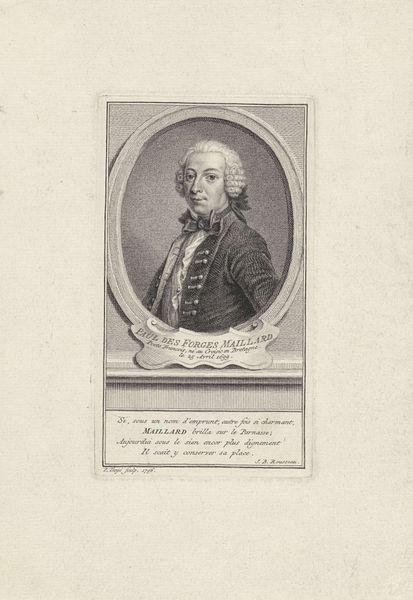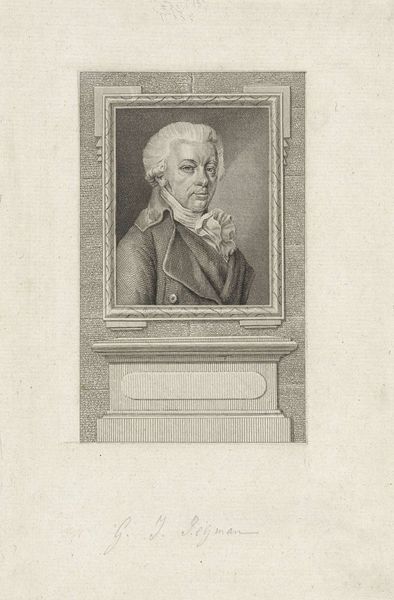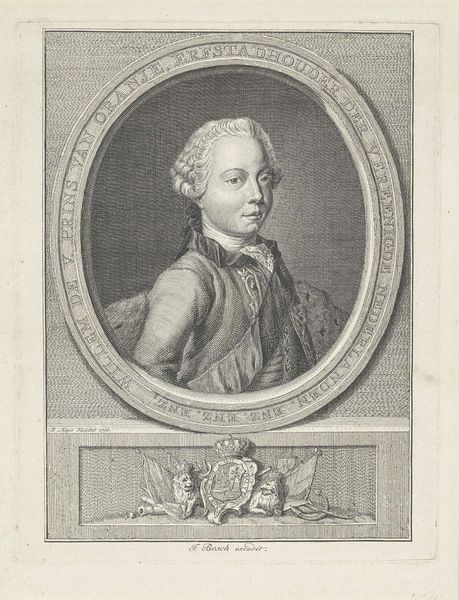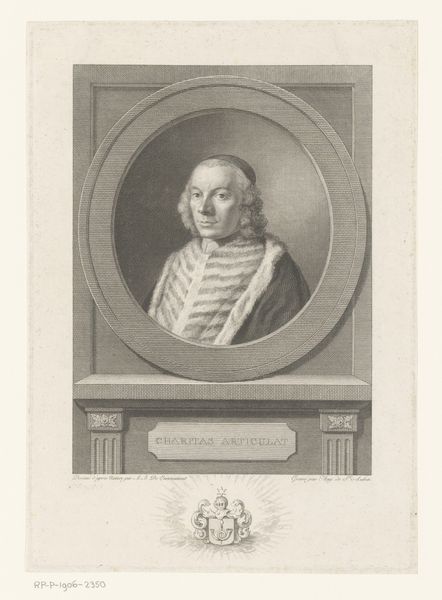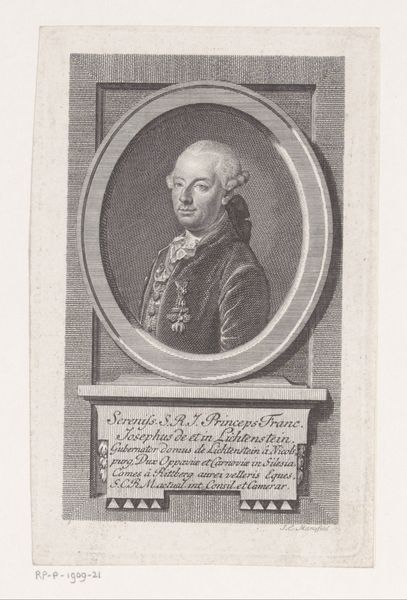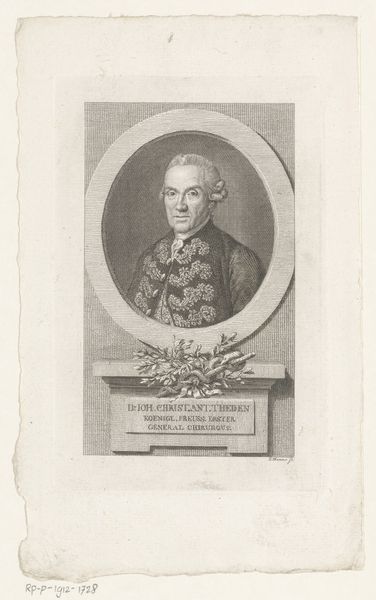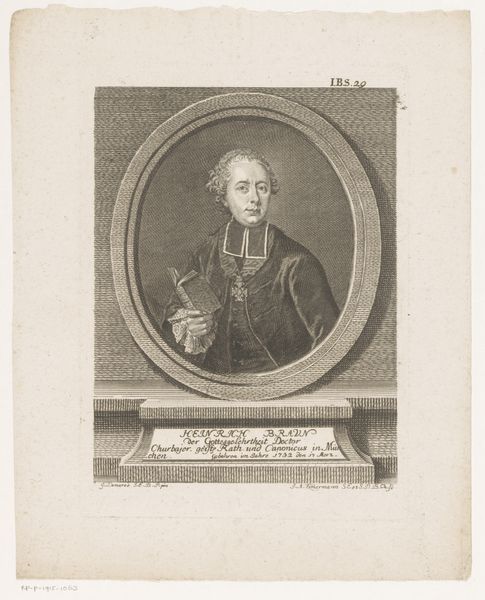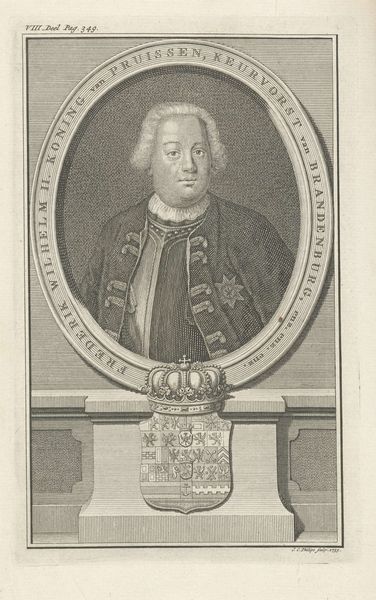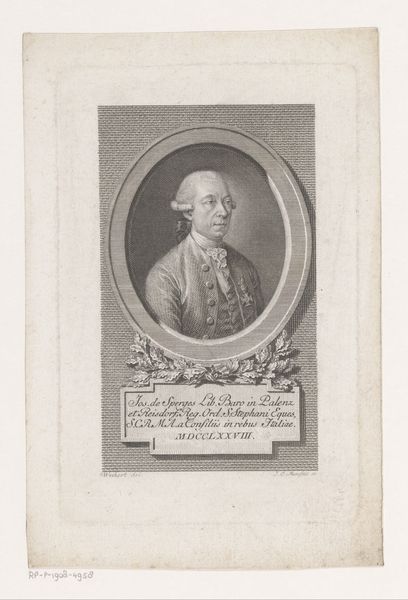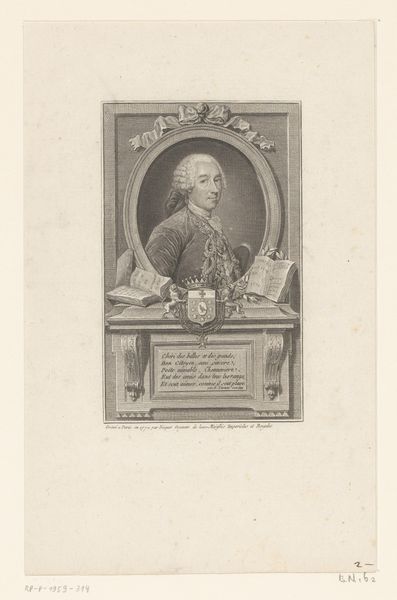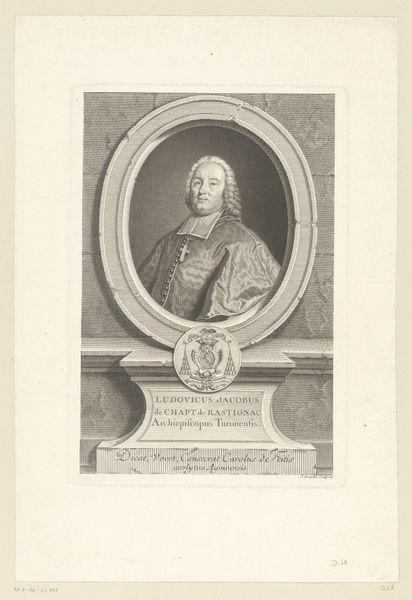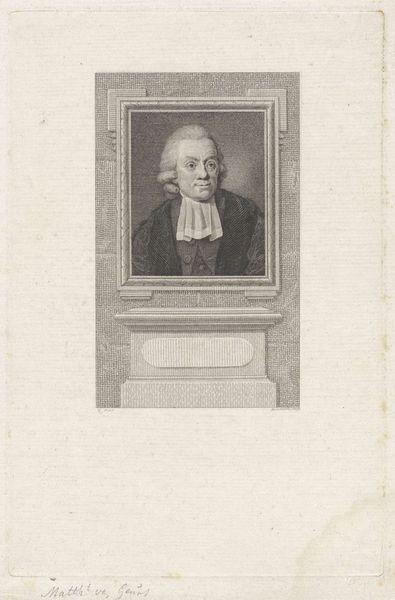
Dimensions: height 220 mm, width 157 mm
Copyright: Rijks Museum: Open Domain
Curator: This engraving from 1792 is titled “Portret van Pietro Antonio Crevenna,” crafted by Reinier Vinkeles. The subject, Crevenna, is presented within an oval frame, set upon what appears to be a classical monument. Editor: The starkness is immediately striking. It's rendered in incredibly fine lines; you can almost feel the texture of the paper and the pressure of the engraver’s tool as he meticulously shaped the image. There’s an austerity, but also a palpable level of craft involved. Curator: Indeed. The Neoclassical aesthetic dominates here, reflecting the era’s fascination with ancient Greece and Rome. The pyramidal structure is suggestive of obelisks or memorial markers, carrying connotations of permanence and remembrance, common tropes in the Baroque style as well. The wreath above his head in the pyramid is quite interesting, hinting at an attained status. Editor: Looking at the texture of the paper and the precision required for this engraving method, I'm curious about its purpose. Was this intended as a singular work, or part of a broader production – perhaps an illustration within a book or some form of printed dissemination? Curator: Almost certainly the latter. Engravings like these were instrumental in disseminating knowledge and likenesses before photography. This portrait, rendered as a print, made Crevenna, a known bookseller from Holland, accessible to a much wider audience. Editor: That's fascinating, considering the social implications! A detailed depiction meant for broader consumption... It positions Crevenna within a very particular visual economy of the time. Did the engraving process allow for multiple runs or would that gradually damage the integrity of the line-work? Curator: The matrix for such an engraving could produce many impressions, but of course with each successive printing there would be a gradual degradation of quality. And this image of him would ripple outwards, layered with all the meanings imbued in it, giving Crevenna a type of symbolic immortality. Editor: So, beyond just its artistic merit, it really served as a key tool of distribution, allowing the image and ideas associated with him to be replicated widely. A beautiful example of where material production meets representation and identity formation! Curator: Precisely. Thinking about it has really given me a new appreciation for the interplay of symbolism and social function. Editor: And I am reminded how vital it is to keep a close eye on materials and making if we want to understand how an image circulated within, and actively helped shape its world!
Comments
No comments
Be the first to comment and join the conversation on the ultimate creative platform.
